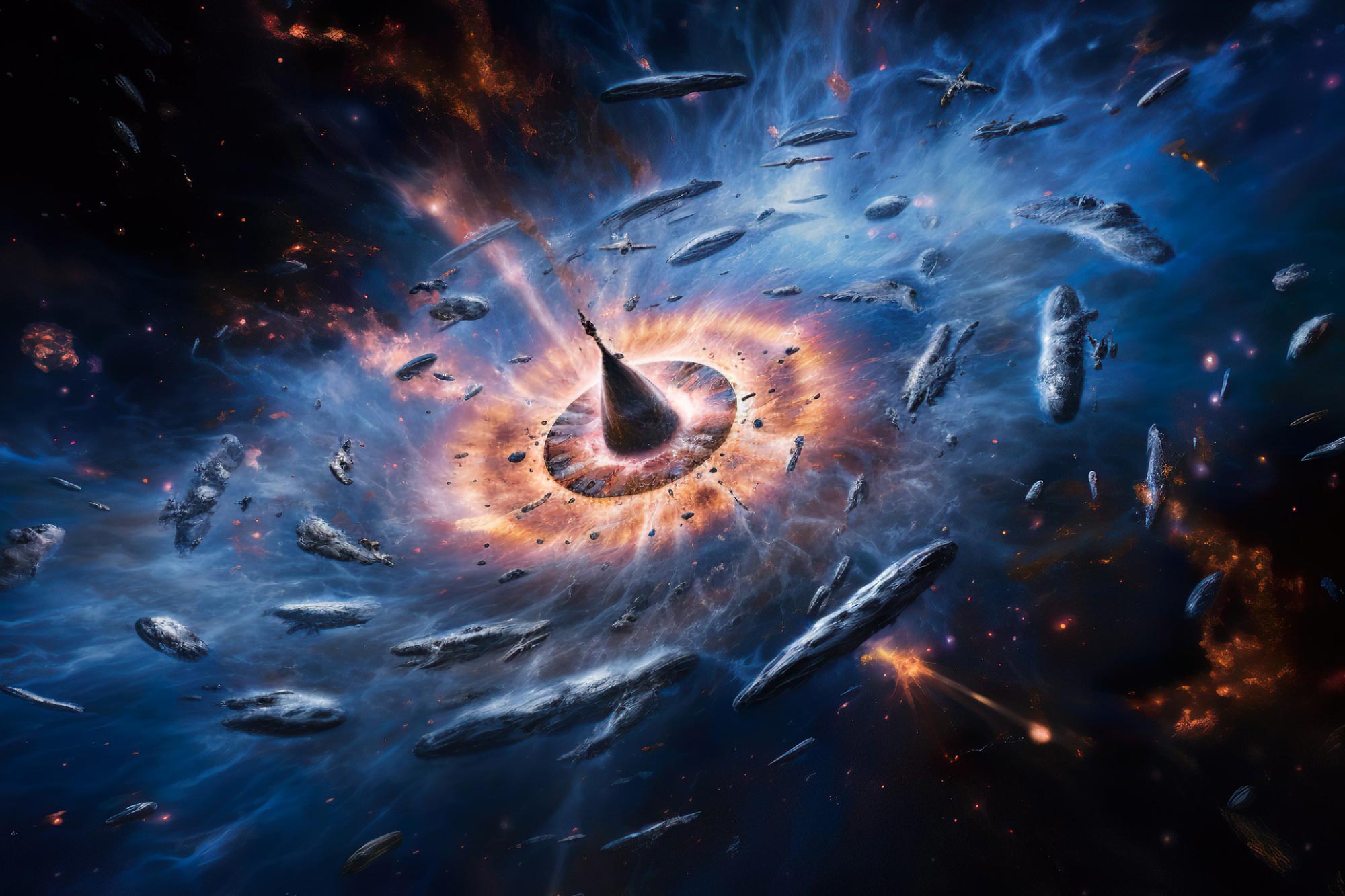

في دراسة رائدة ، استخدم العلماء الكوازارات كساعات كونية لمراقبة الكون المبكر وهو يسير في حركة بطيئة للغاية ، مما يؤكد صحة نظرية النسبية العامة لأينشتاين. من خلال فحص البيانات من ما يقرب من 200 كوازار ، ثقوب سوداء فائقة الكتلة في مراكز المجرات المبكرة ، وجد الفريق أن الوقت بدا وكأنه يتدفق أبطأ بخمس مرات عندما كان عمر الكون يزيد قليلاً عن مليار سنة.
تُظهر بيانات الرصد من ما يقرب من 200 كوازار أن أينشتاين كان صحيحًا – مرة أخرى – حول التمدد الزمني للكون.
لاحظ العلماء لأول مرة أن الكون كان يعمل في حركة بطيئة للغاية ، مما فتح أحد ألغاز كون أينشتاين الآخذ في الاتساع.
تعني نظرية النسبية العامة لأينشتاين أننا يجب أن نلاحظ الكون البعيد – وبالتالي القديم – يعمل بشكل أبطأ بكثير مما هو عليه اليوم. ومع ذلك ، فقد ثبت أن النظر إلى ذلك الزمن بعيد المنال. تمكن العلماء الآن من حل هذا اللغز باستخدام الكوازارات كـ “ساعات”.
قال المؤلف الرئيسي للدراسة ، البروفيسور جيريانت لويس من كلية الفيزياء ومعهد سيدني لعلم الفلك في جامعة سيدني.
“إذا كنت هناك ، في هذا الكون الرضيع ، فإن ثانية واحدة ستبدو وكأنها ثانية واحدة – ولكن من موقعنا ، أكثر من 12 مليار سنة في المستقبل ، يبدو أن ذلك الوقت المبكر يتأخر.”
تم نشر البحث في 3 يوليو في علم الفلك الطبيعي.

البروفيسور جيرانت لويس في معهد سيدني لعلم الفلك في كلية الفيزياء بجامعة سيدني. الائتمان: جامعة سيدني
استخدم البروفيسور لويس ومساعده ، الدكتور بريندون بروير من جامعة أوكلاند ، البيانات المرصودة لما يقرب من 200 كوازار – ثقوب سوداء فائقة الكتلة في مراكز المجرات المبكرة – لتحليل هذا التمدد الزمني.
قال البروفيسور لويس: “بفضل أينشتاين ، نعلم أن الزمان والمكان متشابكان ، ومنذ فجر الزمن في تفرد الانفجار العظيم ، كان الكون يتوسع”.
“هذا التوسع في الفضاء يعني أن ملاحظاتنا للكون المبكر يجب أن تبدو أبطأ بكثير من تدفقات الوقت اليوم.
“في هذه الورقة ، أثبتنا ذلك مرة أخرى إلى حوالي مليار سنة بعد[{” attribute=””>Big Bang.”
Previously, astronomers have confirmed this slow-motion universe back to about half the age of the universe using supernovae – massive exploding stars – as ‘standard clocks’. But while supernovae are exceedingly bright, they are difficult to observe at the immense distances needed to peer into the early universe.
By observing quasars, this time horizon has been rolled back to just a tenth the age of the universe, confirming that the universe appears to speed up as it ages.
Professor Lewis said: “Where supernovae act like a single flash of light, making them easier to study, quasars are more complex, like an ongoing firework display.
“What we have done is unravel this firework display, showing that quasars, too, can be used as standard markers of time for the early universe.”
Professor Lewis worked with astro-statistician Dr. Brewer to examine details of 190 quasars observed over two decades. Combining the observations taken at different colors (or wavelengths) – green light, red light, and into the infrared – they were able to standardize the ‘ticking’ of each quasar. Through the application of Bayesian analysis, they found the expansion of the universe imprinted on each quasar’s ticking.
“With these exquisite data, we were able to chart the tick of the quasar clocks, revealing the influence of expanding space,” Professor Lewis said.
These results further confirm Einstein’s picture of an expanding universe but contrast earlier studies that had failed to identify the time dilation of distant quasars.
“These earlier studies led people to question whether quasars are truly cosmological objects, or even if the idea of expanding space is correct,” Professor Lewis said.
“With these new data and analysis, however, we’ve been able to find the elusive tick of the quasars and they behave just as Einstein’s relativity predicts,” he said.
Reference: “Detection of the cosmological time dilation of high-redshift quasars” by Geraint F. Lewis and Brendon J. Brewer, 3 July 2023, Nature Astronomy.
DOI: 10.1038/s41550-023-02029-2

“هواة الإنترنت المتواضعين بشكل يثير الغضب. مثيري الشغب فخور. عاشق الويب. رجل أعمال. محامي الموسيقى الحائز على جوائز.”
